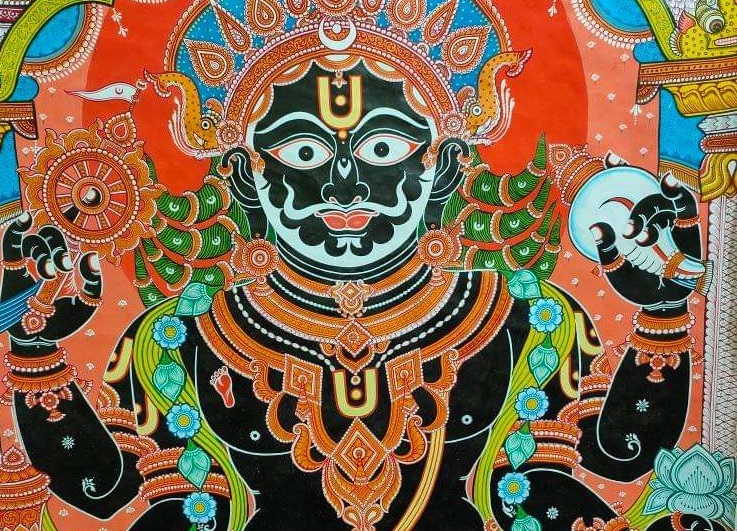Pati Dians get worshipped at Lord Jagannath temple in Puri during Anasara: Details here
As per the tradition, the work for preparation of the Pati Dians begins at the houses of the Chitrakar servitor on the Rukminiharana Ekadashi on the bright fortnight in the month of Asadha
Puri: During Anasara, Lord Jagannath, Balabhadra and Devi Subhadra stay at the Anasara Gruha in the famous Lord Jagannath temple, the Srimandira in Puri of Odisha. Devotees are not allowed to get darshan of the trinity during this quarantine period. Yet, during this 14 days span, Pati Dians are worshipped as replicas of the trinity.
After the famous Snana Yatra of Lord Jagannath and siblings in Puri Srimandira, the three deities fall sick. Hence they are kept at the Anasara ghara and healthy foods as well as herbs are offered to them during this span of14 days.
This year, the Anasara is going on these days in the famous Puri temple. Within this period the deities of Srimandira will be worshipped as Pati Dians near the bahara katha area of the temple.
The history of Pati Dian is very old. Besides, art, culture and tradition of the ancient Utkala are attached with this. As per legends, Lord Jagannath for the first time had incarnated as Pati Dian in front of King Indradyumna at the Adapa Mandapa, the birth place of the Lord at the Gundicha temple in Puri.
Researchers have opined that worship of Pati Dian was prevalent even before the custom of worshipping idols. The Chitrakara (Artist) servitors prepare the Pati Dian with much dedication and devotion. During the Anasara period, the recitation of hymns and execution of other rituals get stopped at Srimandira.
After taking holy bath at the Snana Bedi, the trinity at Srimandira fall sick of fever and remain in quarantine for a fortnight. During this period the Daitapati servitors perform secret rituals for recovery of the deities at the Anasara Ghara. During this period Ananta Basudeva is worshipped in place of Lord Balabhadra, Goddess Bhubaneswari gets worshipped in place of Devi Subhadra and Lord Ananta Narayan gets worshipped in place of Lord Jagannath while Patitapabana gets worshipped in place of Sri Sudarshan.
Pati Dians which are actually Pattachitras are very beautiful. The Chitrakar servitors prepare it at their home.
On the Snana Purnima day, the Pati Dians are taken in a procession from the house of the Chitrakar servitor to the Srimandira amid sound of bells and blowing instruments including kahali.
In the Chitrakar sahi of Puri, the Pattachitra of Lord Ananta Basudev and Maa Bhubaneswari are prepared while the Pattachitras of Lord Ananta Narayan and Patitapabana are prepared at the Panapriya gali (lane).

On the Sitalasasthi day, following the Panti Bhoga, the Chitrakar servitors perform the Pati laagi ritual. From the Rukminiharana Ekadashi, these Pattachitras are coloured. The Pati Dians are prepared using Hingula, Haritala, Sankha, Deepakala, Khandaneli, Pata, Geru, Kaintha Atha (gum). In between Sitalasasthi and Snana Purnima the whole family of the Chitrakar servitors consume Habisyanya and prepare the Pati Dians with all sanctity.
Ahead of the Rath Yatra, till the Nabajoubana Darshan, the idols are kept in the Anasara Ghara that is temporarily made at the Jagamohan of Srimandira. During this phase, devotees are not allowed to pay visit to the idols. And symbolically, the Pati Dians are worshipped in place of the deities.
The pattachitras are made on a piece of cloth. This cloth first gets a layer of paste made of Khadigunda (Chalk powder) and Tentulimanda gum. The height of each of these patis is 5 and half feet and the width is 4 and half feet. It is said that the origin and development of the art of Pattachitra has taken place in Odisha only.
As per the tradition, the work for preparation of the Pati Dians begins at the houses of the Chitrakar servitor on the Rukminiharana Ekadashi on the bright fortnight in the month of Asadha. From the Dwadashi the drawing work begins. However, due to lack of time the artists actually begin the work from Sitalasasthi.
The eldest and most experienced one in the family draw the naksha (map), Barna Binaya, Ayudha (weapons), Alankara (ornaments) and dhadi. Mostly, by Chaturdashi the drawing work gets finished.
On the Snana Purnima day, a festival is observed at the house of the Chitrakar servitor. During this observation the freshly drawn Pata Dians are hanged on the wall and worshipped with incense stick and lamp. Friends and other devotees can have glimpses of the Pati dians here.
On the same day, following the Pahandi Bije ritual of the idols from the Snana Bedi, the Puja Panda sets out from the Srimandira in a procession amid sounds of musical instruments and visit the house of the Samanta Chitrakar. He worships the Pati Dian at the house of the artist and give offerings. Then the Chitrakar wrap the Pati Dians in Patapatani and goes with a procession to the Srimandira.
The Pati Dians of all the three baadas get assemble near the Aruna Stambha (Aruna Pillar) at the Singhadwara and together visit to the Srimandira.
On the night of the Snana Purnima after proceeding of the three idols to the Anasara ghara in Pahandi, the Pati Dians are taken inside the temple. They are placed on the taati of the Jay Bijaya dwara by the Daraji (tailor) servitors. The Pati Dians are not placed on the ground. The Pati Dians give darshan to devotees till Amabasya, the no moon day. The daily rituals are performed. After the Olagi ritual of the Pati Dians the Naba Joubana Darshan of Lord Jagannath takes place.
There is no concrete evidence regarding preservation of the Pati Dian following the Olagi ritual. However, it is said that the Pati dians are preserved either at the SakhiGopinath temple or Mandani ghara at the backside of the Srimandira.




 Ms Kalinga
Ms Kalinga